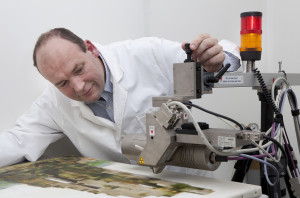Art collecting is more than obtaining something valuable. It is about having a collection that others want to see. A good collection tells others about the art that they wouldn’t be able to determine simply by seeing the pieces alone. There are a few keys to planning your first collection.
Establish your tastes
The first step is to determine which pieces appeal to you. When you collect simply on what interests others it’s hard to make a statement with your collection. Forbes recommends touring galleries and other collections. Spend time at auctions and with other collectors before making a purchase. This will give you an opportunity to determine what interests you. Ultimately you are the one who will own the collection. It doesn’t matter if everyone shares your opinions. Your collection allows you to express your unique tastes.
Form a Cohesive Collection
Once you know what you like it’s important to know why you like it. According to ArtBusiness.com the best collections aren’t simply randomly selected pieces, but have something that ties them together. The collection then becomes a work of art in and of itself. When you know why you like a particular piece it makes it easier to select similar pieces. If you select simply based on the interests of others you may find that it is difficult to create your collection.
Create a Budget
Once you have an idea of what interests you it’s important to set a budget. How much are you planning to spend on your collection right now? How many pieces do you want to start with? These are important questions to consider and will help you determine your budget per piece as well. Art collecting can be an expensive hobby and if you spend your entire budget on one piece it may be a while before you are able to add to your collection. In addition to purchasing the piece itself you also need to consider the cost of insuring, obtaining, and displaying it.
Document Everything
Proper storage and documentation is an important key to planning your first collection. You will need to have a filing system in place to keep track of all of your purchases before you start. This paper trail is the key to establishing the authenticity of the pieces you purchase. Careful documentation preserves the value of your collection and is important not only for your own interests, but for insurance purposes as well.
Pick Your First Piece
The first piece in your collection is the building block upon which you will select your other pieces. It is essentially the first step in starting your collection. By this point you should already have a well-defined idea of what your particular tastes are. This piece should fit with the theme that you have determined for your collection. It is okay to spend more on this piece than the others as long as you don’t go over budget and are still able to purchase the remaining pieces for your collection.


